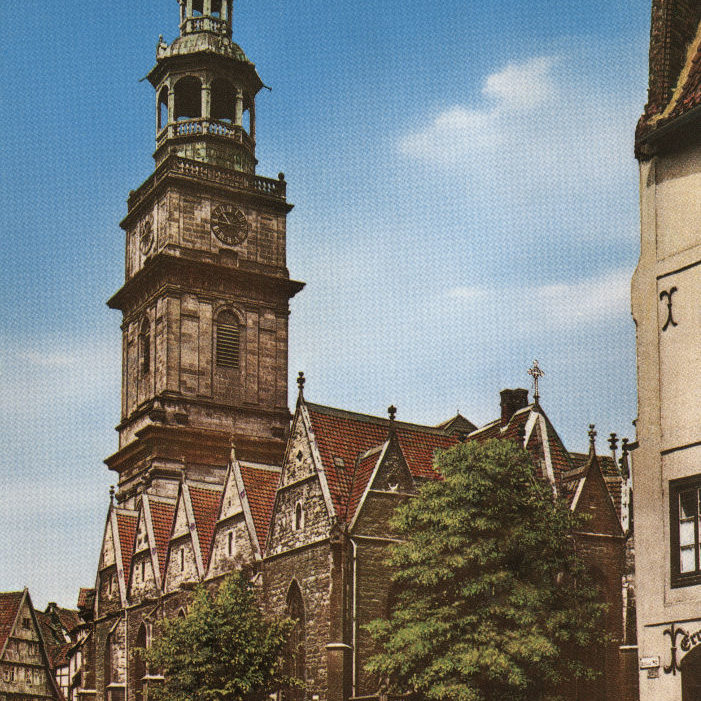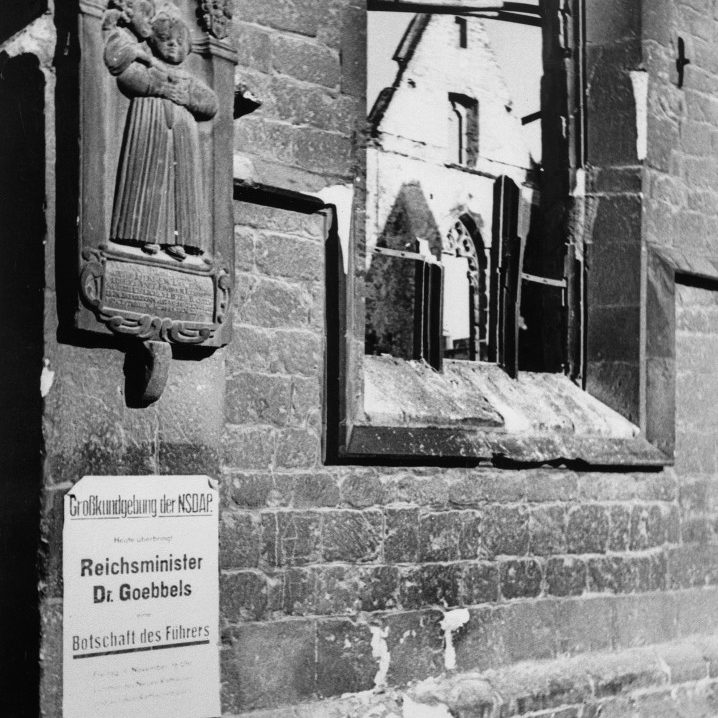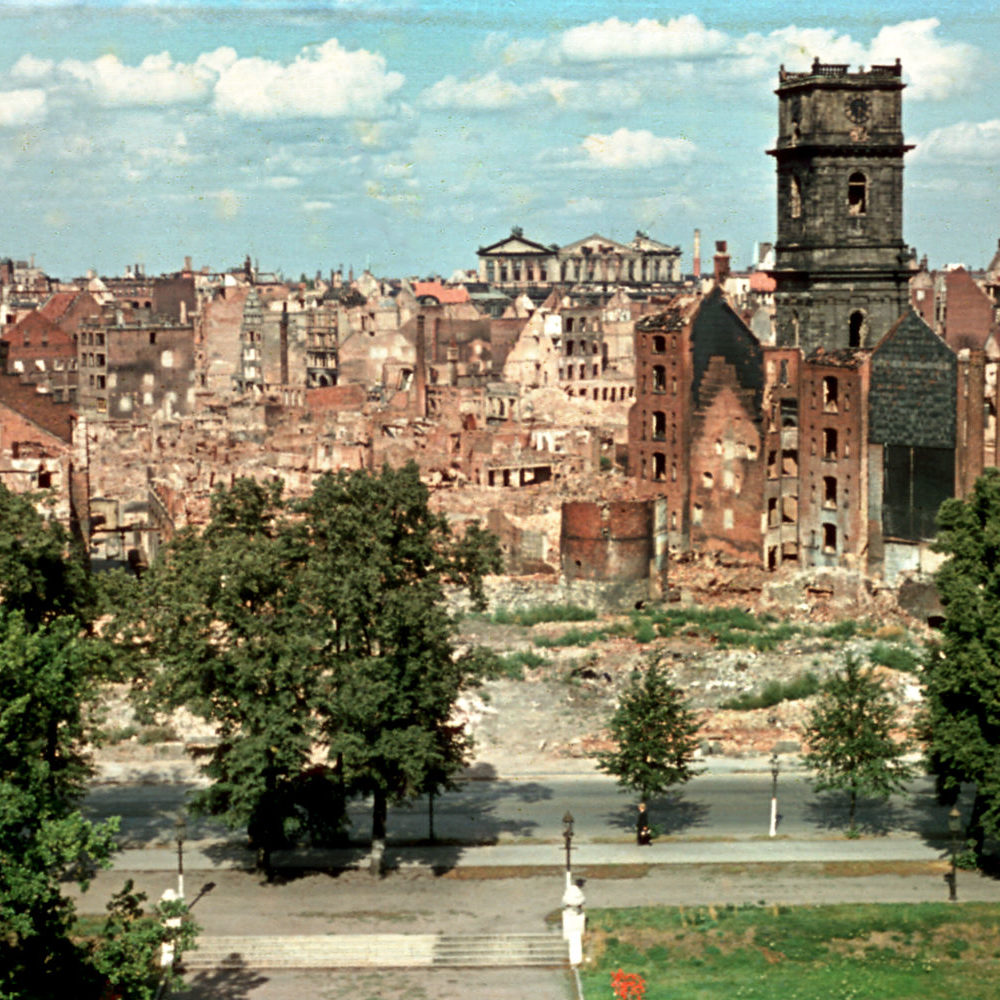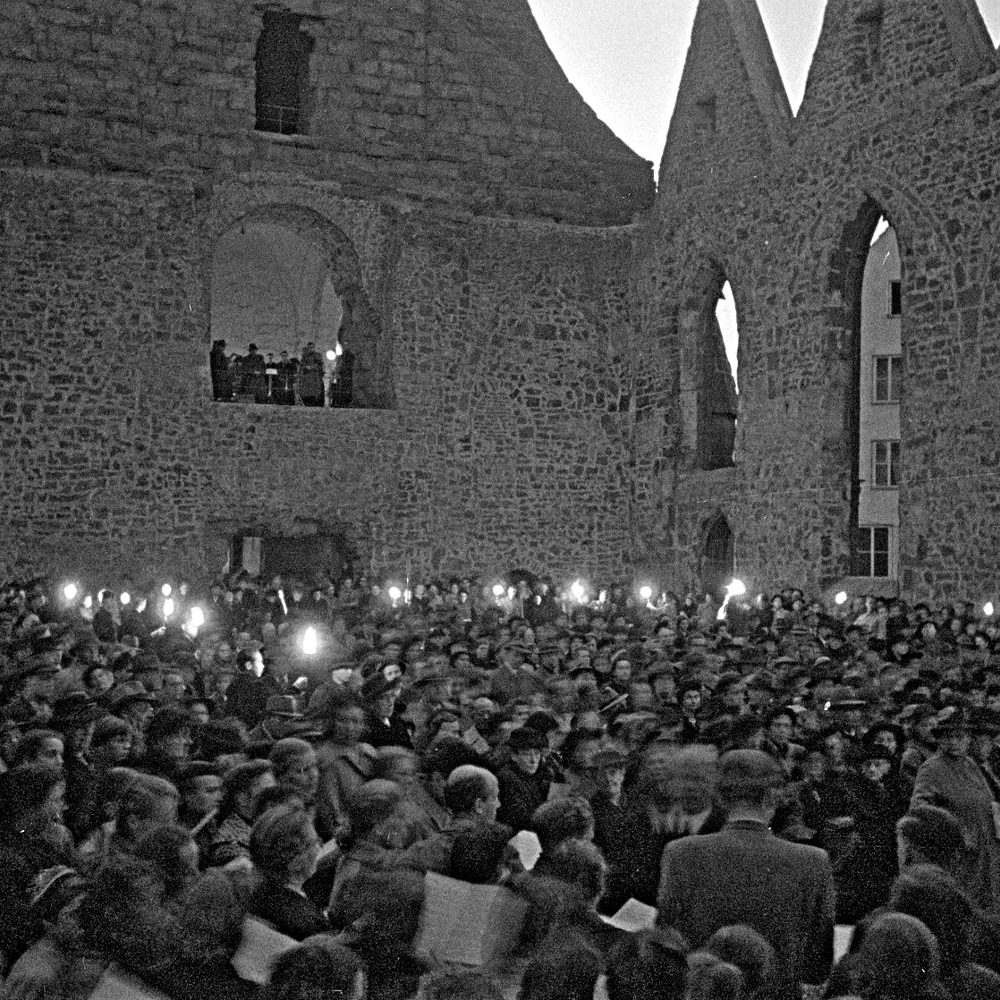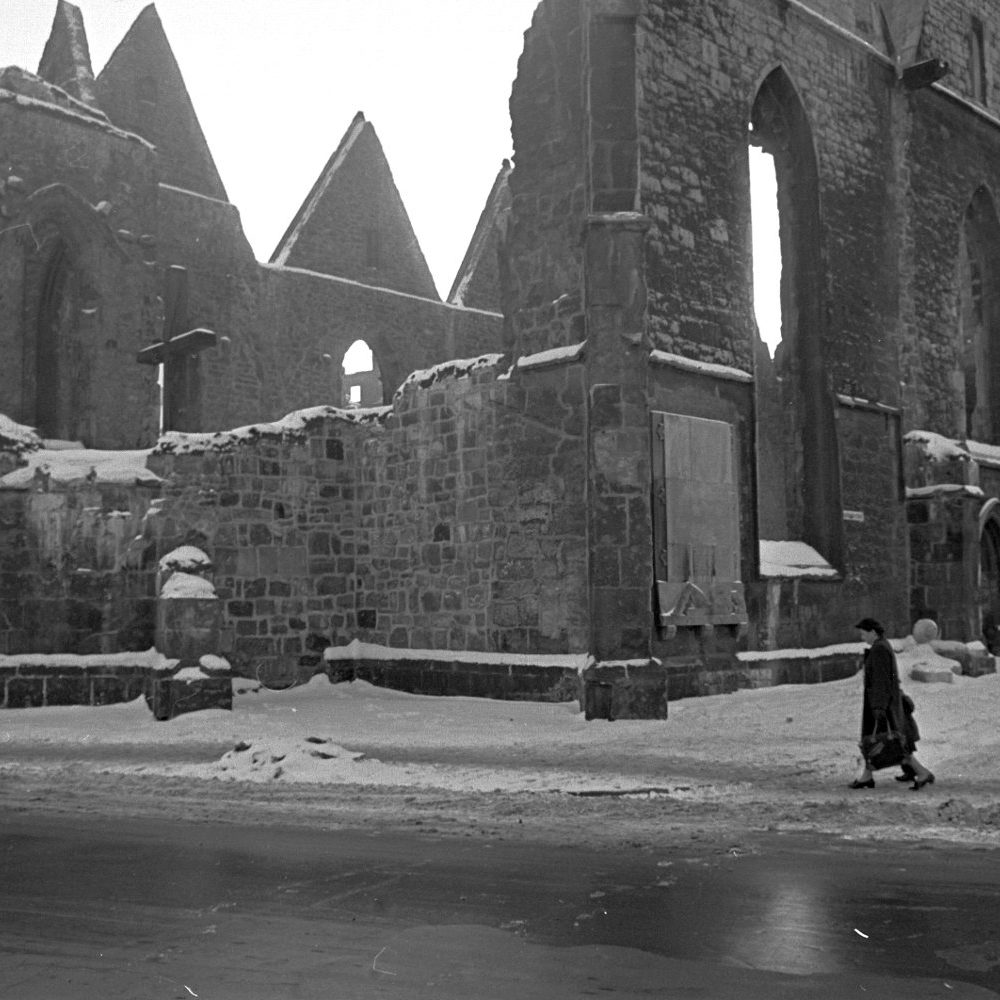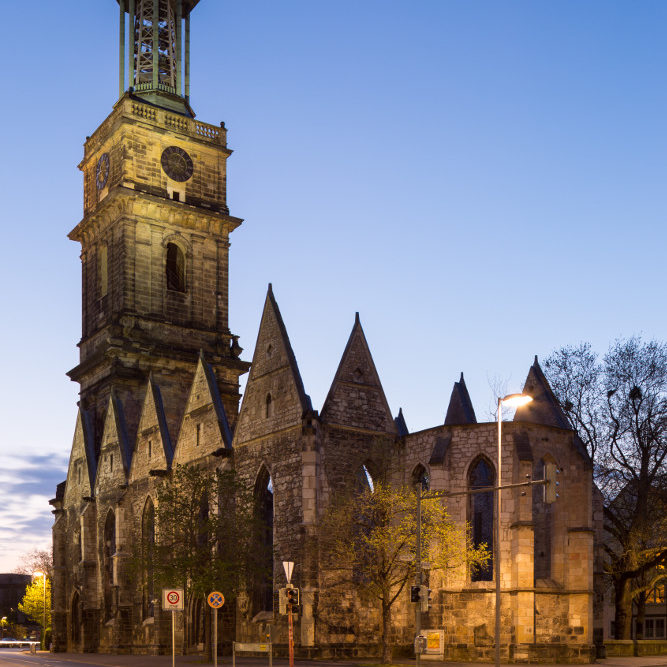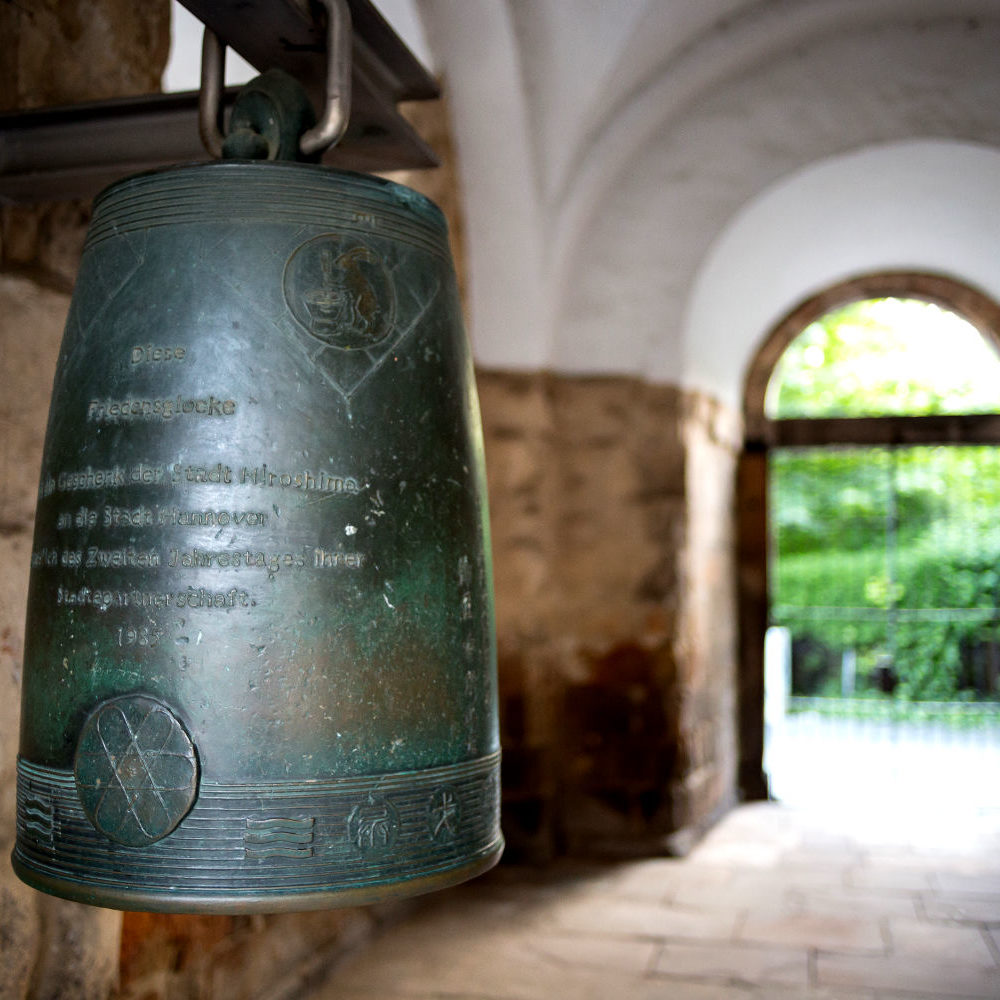The Aegidienkirche [Church of Aegidien], a Gothic hall church, was built in the middle of the 14th century. Together with the Marktkirche and Kreuzkirche it was one of the three churches in Hanover’s Altstadt. But today, its ruins stand as a memorial to the victims of war and violence.
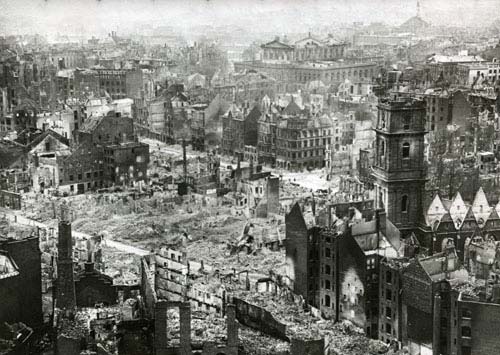
Destroyed in a night of bombing
In the night from the 8th to the 9th October 1943, the church is almost completely destroyed by bombs. The ruins of its outer walls and the tower stump have been retained as a memorial to the victims of war and violence.
Aerial warfare
The technical advances made by the Luftwaffe [German Air Force] means that in the Second World War it has the capacity to destroy targets far behind enemy lines. Aerial warfare strategy means that the battle can also be waged in the opponent’s homeland: attacks on residential districts are designed to demoralise the population, while the destruction of industrial facilities and the infrastructure are aimed at interrupting supplies to the front. At the beginning of the war, the German Luftwaffe had carried out numerous all-out bombing strikes targeting cities: Wieluń, Warsaw, Rotterdam, London, Coventry… But, from 1942 onwards, the Allies’ stronger industrial resources gradually led them to achieve air superiority over Germany.
Large-scale destruction of the city centre
The hope of many Hanoverians that the city would be spared any bombing due to its former personal union with England was not to be realised. There are too many key companies vital to the war economy at this large industrial centre for that to happen. And so the first concentrated attack on a major German city is directed against Hanover: in February 1941, bombs from 200 aircraft hit the main railway station and parts of the Oststadt in the east of the city.
And the annihilation was to increase. In July 1943, the city centre is hit hard and on the night from the 8th to the 9th October 1943 it is practically completely burnt to the ground. By the end of the war, 88 air raids had killed around 6800 people. Ninety per cent of the centre is destroyed. Half of the dwellings in Hanover are uninhabitable. By the end of the war in May 1945, the number of inhabitants has been halved to 217,000, mainly through people having been evacuated. Prior to this, the National Socialist city authorities considered rebuilding the city on the Deister uplands after the “final victory” and making it bomb-proof…
Little impact on the course of the war
From today’s vantage point, the aerial carpet bombing by the Allies did not significantly shorten the Second World War. More often than not, the anger of the German civilian population is directed against the British and American bomber fleets, rather than against their National Socialist leaders. A propaganda war is also waged. Leaflets dropped by the British bear the slogans: “Germans, remember with every bomb, Hitler started this war!”. Nazi propaganda, on the other hand, uses the attacks to whip up anti-Semitic sentiment. Posters issued by the Hanover Gauleitung cite “World Jewry” as the cowardly instigator of the bombing raids.
The fate of foreign slave labour in the bombing campaign
It is not until after the first major attacks of 1941 that the construction of a total of 57 public above-ground and underground bunkers is frantically begun. Some can still be found today within the urban area. Those who manage to reach the entrance to one of these shelters when the air-raid sounds are for the most part safe. A worse fate befalls the tens of thousands of foreign forced labourers and prisoners of the seven concentration camps in Hanover, who have to endure the hail of bombs in their wooden barracks or in makeshift trenches. The doors of the bunkers are also closed to Jews. Prisoners of war and concentration camp inmates are forced to defuse unexploded ordnance – literally a suicide mission.
Nowadays a memorial
In 1952, the burnt-out ruins of the Aegidienkirche are chosen as Hanover’s landmark memorial to the victims of war and violence. Since 1985, a peace bell has hung in the tower entrance as a gift from Hanover’s twin city Hiroshima. Every year on 6 August it is rung to commemorate the dropping of the atomic bomb. Each year on 9 October, the destruction of Hanover by aerial bombardment during the Second World War is commemorated at an event in the Aegidienkirche.
Additional online information
NDR.de October 1943. The bombing of Hanover [in German]
Wikipedia entry Bombing of Hanover in World War II
State capital Hanover Special commemorative days [in German]
Further reading: Click here
Texts and images: Michael Pechel

